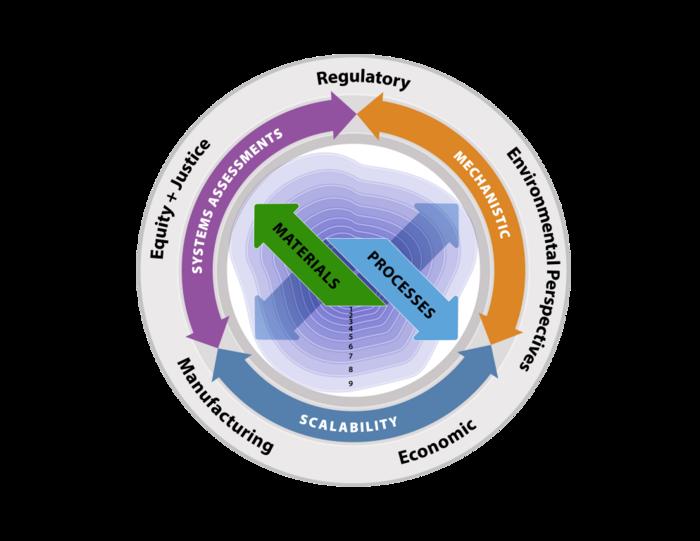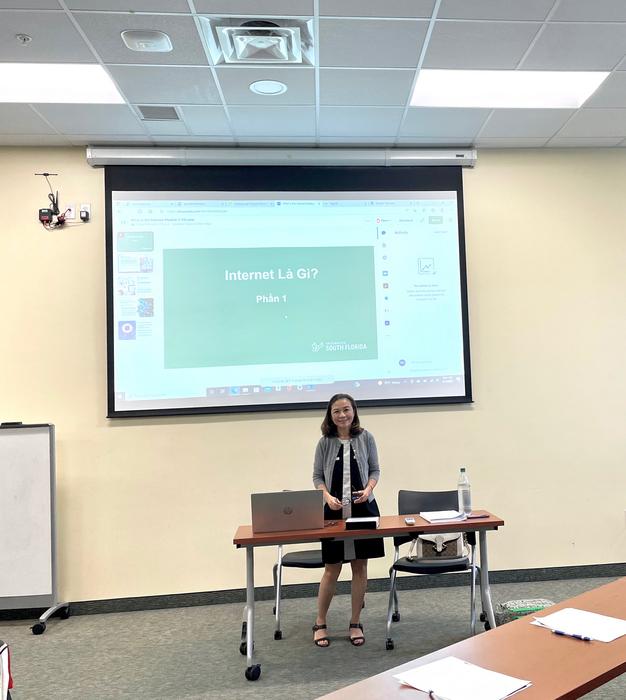Left Ventricular Diastolic Ultrasound Norms in Preterm Infants
In a groundbreaking advancement poised to redefine neonatal cardiac care, researchers have unveiled comprehensive reference ranges for left ventricular diastolic function in stable preterm infants. Utilizing cutting-edge multimodal ultrasound technologies, this study pioneers an unprecedented insight into the cardiac physiology of some of the most vulnerable patients within neonatal intensive care units (NICUs). By meticulously […]


In a groundbreaking advancement poised to redefine neonatal cardiac care, researchers have unveiled comprehensive reference ranges for left ventricular diastolic function in stable preterm infants. Utilizing cutting-edge multimodal ultrasound technologies, this study pioneers an unprecedented insight into the cardiac physiology of some of the most vulnerable patients within neonatal intensive care units (NICUs). By meticulously charting the diastolic parameters during both early and late phases of NICU admission, the investigators address a critical knowledge gap, offering clinicians a nuanced understanding that could enhance diagnostic precision and therapeutic interventions.
The left ventricle’s role in cardiac performance is vital, especially in preterm infants, whose immature cardiovascular systems are susceptible to hemodynamic instability and adverse outcomes. Diastolic function, the phase when the heart relaxes and fills with blood, is notoriously challenging to assess, particularly in neonates with rapidly evolving physiology. Prior to this research, the paucity of reliable normative data limited clinicians’ ability to differentiate pathology from physiological variability. The strategies deployed in this study employ a synergy of ultrasound modalities, ranging from tissue Doppler imaging to speckle-tracking echocardiography, to delineate detailed diastolic behavior.
These advances were necessitated by the recognition that conventional echocardiographic indices often lack sensitivity and reproducibility in the preterm population. Through rigorous methodology, the investigators crafted a longitudinal framework whereby stable preterm infants were examined within defined stratifications of postnatal age. The early admission period—typically encompassing the first days of life—and the late admission period—ranging from weeks later—serve as critical windows reflecting evolving myocardial relaxation mechanics. This stratification facilitates a temporal mapping of cardiac maturation and adaptation under clinical care conditions.
Moreover, the implementation of multimodal ultrasound techniques enabled the capture of multiple complementary parameters. Tissue Doppler velocities provided insights into myocardial wall motion velocities during early and late diastolic phases, highlighting subtle alterations in relaxation kinetics. Simultaneously, the use of speckle-tracking echocardiography allowed for the quantification of myocardial strain rates, a sensitive metric for myocardial deformation and compliance. Combining these data streams yields a multidimensional profile of ventricular diastolic function in preterm infants, hitherto unattainable through monomodal assessment.
The implications of establishing such reference ranges extend beyond academic curiosity. Clinicians armed with normative benchmarks gain the capacity to swiftly identify deviations suggestive of diastolic dysfunction, which may portend impending circulatory compromise or heart failure. Early detection is paramount, as tailored interventions—whether pharmacological or supportive—can substantially modulate outcomes. Furthermore, these parameters hold promise in guiding nuanced fluid management and respiratory strategies that indirectly impact cardiac loading conditions.
Equally notable is the study’s focus on stable preterm infants, a demographic often overshadowed by the acutely ill but whose cardiac development trajectories carry profound long-term implications. Stability in the clinical context denotes the absence of overt hemodynamic derangements or critical illness, making the derived ranges representative of physiological maturation rather than pathological alteration. This distinction shields against confounding variables and refines the precision of normative data.
The research also paves the way for the integration of such multimodal ultrasound protocols into routine NICU practice. Although high-level imaging modalities demand technical expertise and sophisticated equipment, technological evolution is steadily democratizing access. Portable echocardiography systems with advanced capabilities, combined with automated analytic algorithms, could soon render these assessments standard components of neonatal monitoring.
Critically, this work underscores the dynamic nature of myocardial relaxation in neonates. Diastolic function is not a static parameter but one evolving with postnatal age, extracorporeal influences, and growth. The study’s temporal analysis reveals that parameters differ significantly between early and late admission periods, illuminating the necessity of age-adjusted interpretations. Such granularity refutes one-size-fits-all diagnostics and advocates personalized assessment strategies.
From a technical perspective, the challenges surmounted in this study speak to the innovative spirit driving neonatal cardiology forward. Imaging preterm infants presents formidable obstacles, including small size, high heart rates, and movement artifacts. The investigators’ successful acquisition and standardization of data across a multicenter cohort attest to robust protocols and interobserver reliability measures that embolden the findings’ validity.
Furthermore, the research holds promise for future explorations into the interplay between cardiac function and other organ systems in preterm infants. Multimodal ultrasound parameters could correlate with cerebral perfusion, renal function, or pulmonary pressures, fostering a holistic approach to neonatal care. The comprehensive characterization of diastolic function thus acts as a foundation for multidisciplinary research endeavors seeking to unravel complex pathophysiological networks.
In the broader context of pediatric cardiology, these reference ranges have the potential to catalyze the development of disease-specific diagnostic criteria and prognostic models. Conditions such as patent ductus arteriosus, bronchopulmonary dysplasia, and pulmonary hypertension frequently intertwine with ventricular diastolic abnormalities. Reliable normative data enable early recognition of secondary cardiac involvement, thereby informing timely treatment modifications.
The study also imparts significant educational value for neonatologists, cardiologists, and sonographers. By elucidating the spectrum of normal diastolic values at different time points, the work nurtures clinical acumen and reinforces the importance of comprehensive cardiac evaluation beyond conventional systolic metrics. It encourages the adoption of advanced echocardiographic techniques as indispensable tools rather than optional adjuncts.
Intriguingly, the investigation touches upon the potential for integrating artificial intelligence into cardiac assessments. Automated analysis of ultrasound images could expedite data interpretation, reduce operator dependency, and enhance reproducibility. The extensive normative dataset established here could serve as training material for machine learning algorithms, advancing towards real-time, AI-guided diagnosis in neonatal cardiac care.
In light of escalating survival rates among extremely preterm infants due to medical advances, the need for refined cardiovascular monitoring becomes ever more pressing. This research equips clinicians with evidence-based reference standards crucial for optimizing care trajectories in this delicate population. Early interventions guided by precise assessments may reduce morbidity and improve neurodevelopmental outcomes, underscoring the societal value of such work.
Finally, this study epitomizes a paradigm shift from isolated measurements to integrated, multimodal cardiac evaluation tailored to the unique physiology of preterm neonates. The marriage of technological innovation with clinical insight exemplifies the future of neonatal cardiology—where sophisticated imaging and data analytics converge to safeguard the hearts of tomorrow’s tiniest patients.
Subject of Research: Reference ranges of left ventricular diastolic multimodal ultrasound parameters in stable preterm infants during early and late neonatal intensive care admission periods.
Article Title: Reference ranges of left ventricular diastolic multimodal ultrasound parameters in stable preterm infants in the early and late neonatal intensive care admission period.
Article References:
de Waal, K., Petoello, E., Crendal, E. et al. Reference ranges of left ventricular diastolic multimodal ultrasound parameters in stable preterm infants in the early and late neonatal intensive care admission period. J Perinatol (2025). https://doi.org/10.1038/s41372-025-02278-1
Image Credits: AI Generated
DOI: https://doi.org/10.1038/s41372-025-02278-1
Tags: assessing cardiac performance in preterm neonatesdiagnostic precision in neonatal carediastolic parameters in neonatal physiologyechocardiographic indices sensitivity in neonateshemodynamic instability in premature infantsleft ventricular diastolic function in preterm infantsmultimodal ultrasound technologies in NICUsneonatal cardiac care advancementsreference ranges for neonatal diastolic functiontherapeutic interventions for preterm infantsultrasound modalities in pediatric cardiologyunderstanding cardiac physiology in NICUs
What's Your Reaction?

































